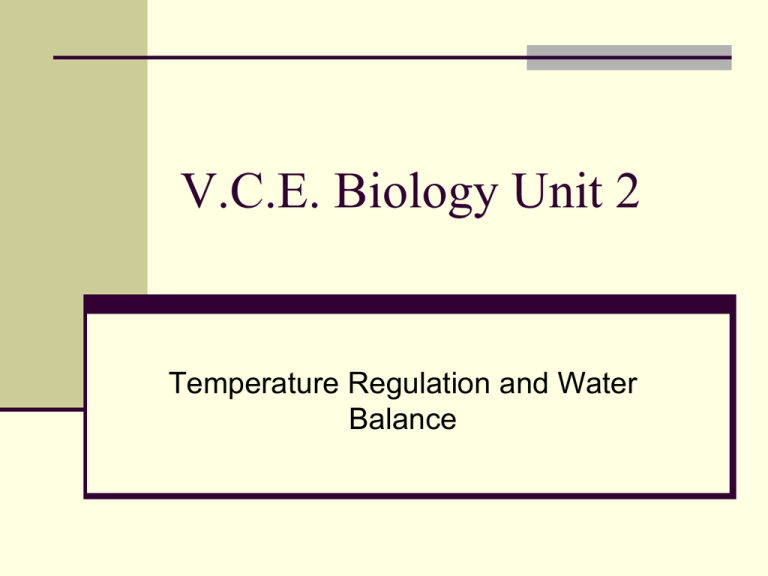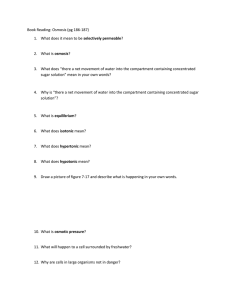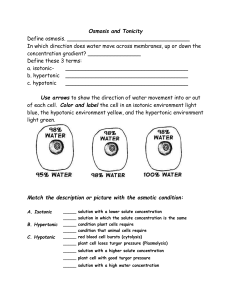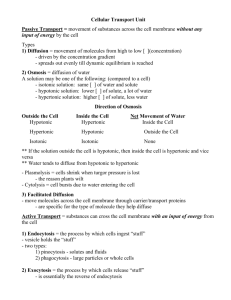Chp 16 Temp Regulation - AdventuresinScienceEducation
advertisement

V.C.E. Biology Unit 2 Temperature Regulation and Water Balance Vascular Plants Plants are not able to maintain body temperature or water balance to the same degree as animals. However, they have many adaptations which allow for the control of water levels: Transpiration Stomata Waxy Cuticles Thick bark allows plants to insulate themselves from heat and the use of stomata allow for some control of the loss of heat to the environment and gas exchange of course Body Temperature in Animals Ectothermic – animals other than birds and mammals that are unable to control their body temperature. They produce less heat from their metabolism and lose it more rapidly to the environment. Ectotherms bask in the sun to increase their internal temperature and are inactive at night and in cold weather hibernating during particularly cold winters by entering a state known as torpor Body Temperature in Animals Endothermic animals are mostly birds and mammals. They maintain a relatively constant internal temperature that is generally greater than the external environment. Endotherms have insulation such as feathers, fur or hair and layers of fat to reduce heat loss to the environment. They also use various physiological and behavioural means (such as hibernation) to regulate heat gain and loss. Temperature Regulation Pathways The regulation of temperature requires a complex set of negative feedback pathways. These include: Behavioural responses – putting on and taking off clothes, moving into and out of shade Physiological responses – shivering, sweating, panting, constriction or dilation of blood vessels Structural – counter current flow, thermal windows, fur and skin colouration. Thermoreceptors are found in the skin and also internally to monitor the temperature of the internal environment and the external environment. Water Balance Terrestrial animals are able to respond to falls and rises in water content by a number of means: Drink more water Use water in food Use metabolic water Remove water from the urine – loop of Henle Remove water from the faeces – large intestine Water Balance For marine and freshwater animals there are other difficulties Freshwater fish and frogs rarely drink water as freshwater moves on an osmotic gradient into their bodies and thus produce a great deal of dilute urine – this is an example of a hypotonic situation Saltwater fish have the opposite problem, they drink regularly as water is constantly moving out of their bodies on an osmotic gradient – this is an example of a hypertonic situation. Isotonic Hypertonic Hypotonic







